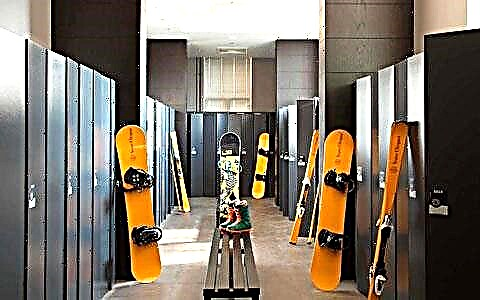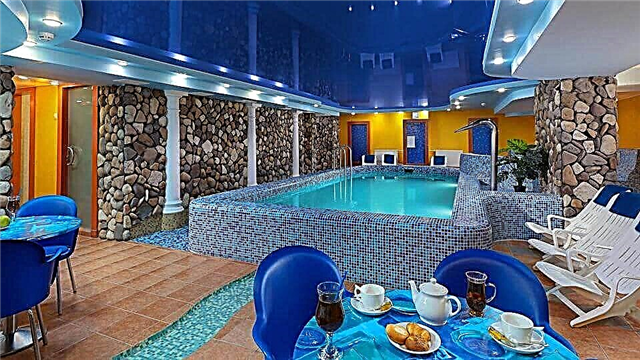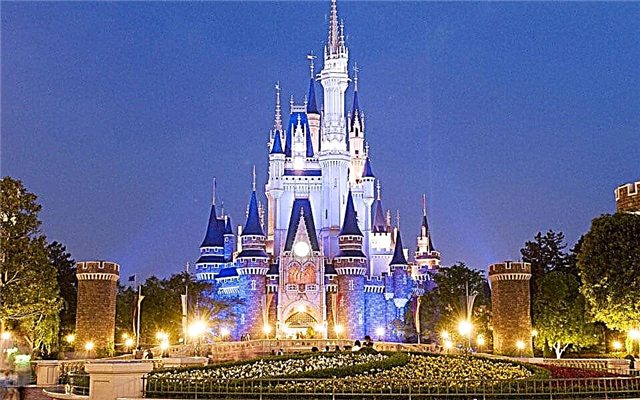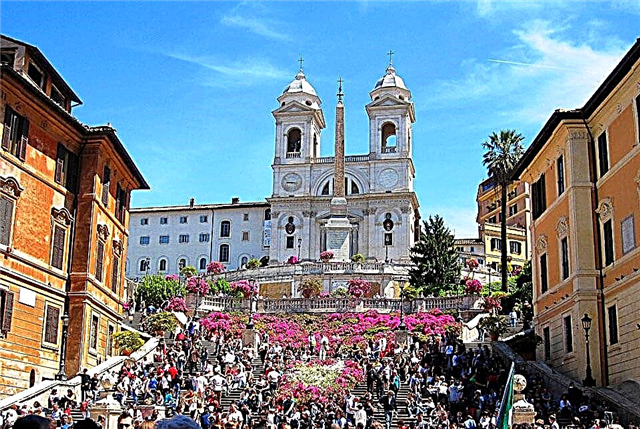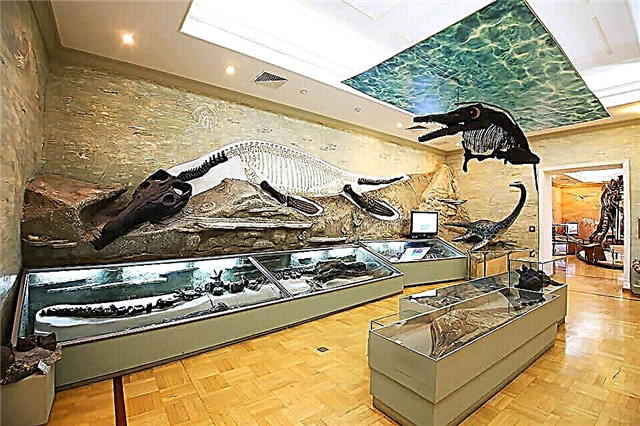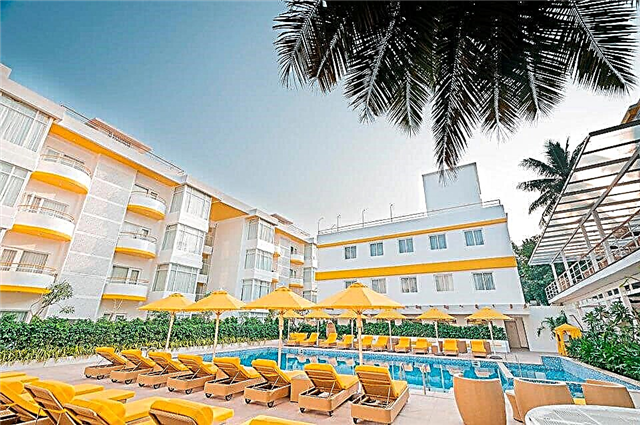Location: Russia, Tver and Novgorod regions
Area: 260 km²
Maximum depth: 24 m
Coordinates: 57 ° 11'23.1 "N 33 ° 04'14.5" E
Content:
Tourists often call Seliger "the blue necklace", and the locals, in the town of Ostashkov, call it Ostashkovskoye Lake. People go to the picturesque reaches and islands to relax in nature, sunbathe, fish, pick mushrooms and touch the Orthodox shrines of Central Russia.

Lake Seliger from a bird's eye view
Secrets of the popularity of the "blue necklace"
Seliger is not one lake. This is a chain of natural reservoirs that appeared on the territory of modern Novgorod and Tver regions after the ice age. The name of the water system has Finno-Ugric roots, and some lakes have received purely Russian names - Dolgoe, Glubokoe, Krugloye and Svyatoe.
Seliger is considered one of the most visited lakes in the world, and there are several reasons for this. Many residents of Russia prefer to spend their holidays in the Central lane. Not everyone is ready to change the climate for health and go to the hot south.
The road to Seliger does not take much time and is inexpensive, so the blue reaches have long become a favorite vacation spot for Muscovites. It is only 360-390 km from the Moscow ring road to the lake, and you can come here not only by car, but also by trains and buses.

The lake system has its own climatic characteristics. Meteorologists have established that there are more fine days here than in other regions of Central Russia, and it rains less often. The reason for this is the large area of the lakes. In summer, the flow of evaporation from the reaches and the rivers flowing into them is so great that a special microclimate is formed in the Seliger region, and thunderclouds often bypass the lakes.
The "Blue Necklace" is loved for the opportunity to spend holidays among beautiful nature. There are no large highways around the lakes. Rest in these places is a dream of residents of big cities, tired of the daily crowds, dust and crowded streets. On the numerous islands and along the banks of the Seliger, there are many untouched places where moose, badgers, raccoons, martens, hares, squirrel foxes and wild boars live. In the channels and lakes, there is a refuge for beavers and dozens of species of waterfowl.
It is noteworthy that the lake itself, despite the abundance of tourists and the villages scattered along its shores, is distinguished by its cleanliness and transparency. All villages, villages and the city of Ostashkov are full of greenery, not to mention the recreation centers standing in the middle of the forests.

View of the lake from the bell tower of the Nilo-Stolobenskaya desert
Natural attractions
Near the village of Volgoverkhovye there is a place where the Volga River begins. The source of the great river is fed by clear water from springs and looks more like a small swamp. However, the modest appearance does not stop travelers. Tourists come to the source of the Volga and the nearby wooden St. Nicholas Church both in summer and in winter.
No fewer visitors come to the holy spring, which is located in Oskovtsy. The water temperature in it is kept around + 8 ° С all year round. The spring has the fame of healing, so people try to bathe in it and take the holy water with them.
To learn more about the plants, animals and environmental problems of the Seligersky region, travelers go to the Museum of Nature in the village of Rogozh, not far from Ostashkov. The museum halls are decorated in the Church of the Transfiguration of the Savior built in the 18th century. For tourists, the doors of the museum are open from Tuesday to Sunday from 11.00 to 18.00.

View of Stolobny Island
What to see in the Seliger villages
The old settlement Berezovy Ryadok is considered a local attraction. According to the chronicles, it is known that the village appeared as a small fortress guarding the trade portage from Novgorod, and it was built near an ancient pagan temple. Nowadays, the flow of tourists to Birch Row is growing, and the reason for this is the picturesque Transfiguration Church that has recently appeared here.
Seligerskie Kizhi or Shchirkov Pogost also grew up next to a pagan settlement. People come to this settlement to admire the churches of the 17th-20th centuries.
Ostashkov's charm
A small picturesque town spreads on a peninsula, in the southern part of the largest of the lakes. Several churches of the 17th-19th centuries and two monasteries have survived in it. Ostashkov is also rich in ancient civil architecture. In the city you can see a solid building of the fire brigade with watchtowers, a town hall and a theater. The Voskresensky and Trinity churches house exhibits of the local museum of local lore.

Nilo-Stolobenskaya desert
Coming to Ostashkov, many tourists try to get into the unusual museum "Ostrog", which tells about the everyday life of the former city prison. Amateur fishermen do not bypass the fish museum, the guides of which introduce everyone to the traditions and tricks of fishing on Seliger.
Pilgrimage tours
Seliger attracts travelers not only with the beauty of nature. Since the end of the 16th century, on the island of Stolobny and the Svetlitsa peninsula, there has been the Nilo-Stolbenskaya Hermitage - a male Orthodox monastery, the shrines of which attract many believers all year round. Here more than 500 years ago there was a small cell of St. Nil Stolbensky.
Today the monastery has been beautifully restored. It amazes tourists and pilgrims with the beauty of ancient temples and a special way of life. Travelers come here to see the worship cross at the site of the saint's cell, the cave and the well of the Nile. Today, 50 inhabitants live within the walls of the monastery. In addition to prayers and divine services, they work in the candle, dairy and carpentry shops, in a jewelry workshop, a stable, a cowshed and an apiary.

View of the city of Ostashkov from the lake
Fishing
Connoisseurs consider the "blue necklace" one of the most catchy places located near Moscow. In the lakes and channels of the Seliger, there are about three dozen fish. In addition to amateur fishing, commercial fishing for pike, perch, bream, pike perch, silver bream, rudd, smelt, vendace and ide is carried out here. In addition, some of the Seliger lakes were stocked with eels and carp.
Of course, fishing in natural reservoirs is different from paid ponds and requires skill and a certain amount of luck. Fishermen should take into account the peculiarities of fishing in different seasons and weather conditions. Experts advise focusing on local seagulls. This bird is a born hunter, and by its behavior it is easier to find a large concentration of fish.
Possibilities for shipping
Many tourists like to travel on the lake by boats and steamers. True, this can be done not everywhere, but only along the deepest reaches. The motor ships "Moskva" ply along Seliger. In the summer season, they carry passengers and conduct tourist excursions.

There is a river station in Ostashkov, and some of the islands can boast of their own marinas. In addition, ferry crossings are equipped across the lake, so that locals and tourists always have the opportunity to get from shore to shore.
Where to stay
The tourist infrastructure of Seliger is focused on receiving guests, and none of the visitors has a problem where to stay. Tourists and youth companies prefer to spend the night in tents. Those travelers who want more comfort choose recreation centers, guest houses and hotels. The most expensive of them offer housing at the level of comfortable apartments and have wells for water intake. The cottages have cozy fireplaces, modern heaters - electric convectors, gas and microwave ovens, washing machines, satellite TV and separate toilets.
It should be borne in mind that the price for accommodation at the Seliger recreation centers and hotels depends on the services they provide to travelers.The bases can have their own beaches and rent boats, bicycles and ATVs. Luxury hotels offer buffet-style meals or provide guests with a choice of menus.

View of the village of Berezovy Ryadok and the Church of the Transfiguration
The cheapest options should be sought from private traders. Homeowners rent out rooms to tourists, small family cottages and hunting lodges remote from the roads. The most economical way to rent such a house is for a group of friends or a family vacation. Moreover, if you book your favorite options in advance, you can count on a good discount.
How to get there
By car. There are two ways to approach the lake from the capital. One leads along the road through Tver, and the other - past Volokolamsk and Rzhev. Whichever option motorists choose, the distance to the lake is almost the same, and the road takes from 5.5 to 6 hours.
By bus. A regular bus runs from the Tushinskaya metro station to Ostashkov. It departs twice a day and reaches the city in 8 hours.

Holy Cross Church
By train. Direct trains run from the Leningradsky railway station of the capital to Ostashkov. In the summer they carry passengers every other day, and in the off-season - even less often. However, many people like this path. The train leaves in the evening and arrives in Ostashkov early in the morning, so passengers can sleep peacefully in 12 hours of travel. Some of them go on the cross-over: from the capital they take a train to Tver, and from there they get to Ostashkov by local buses.


